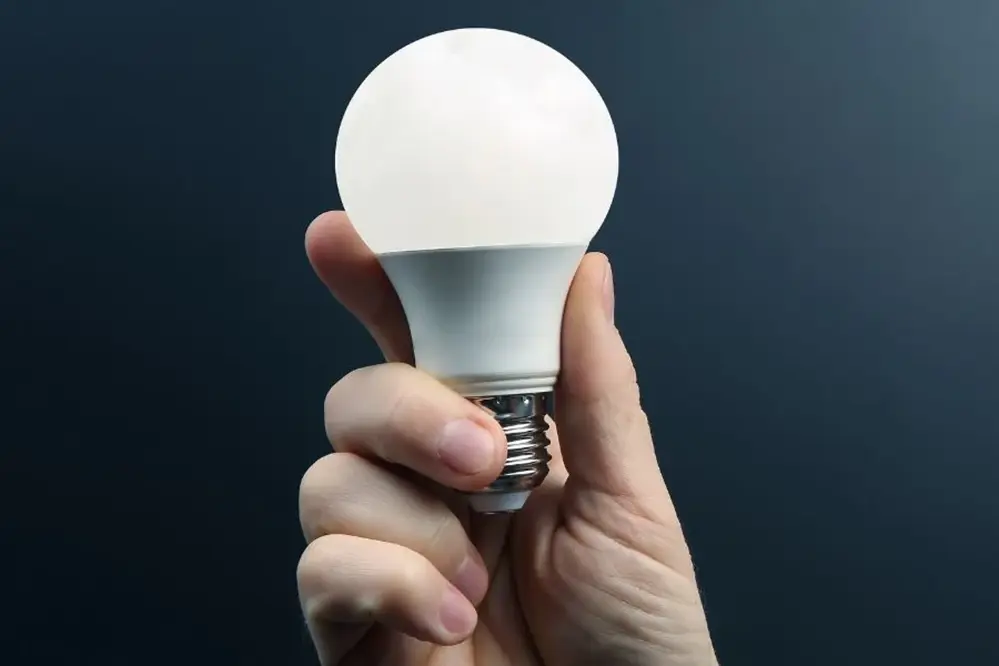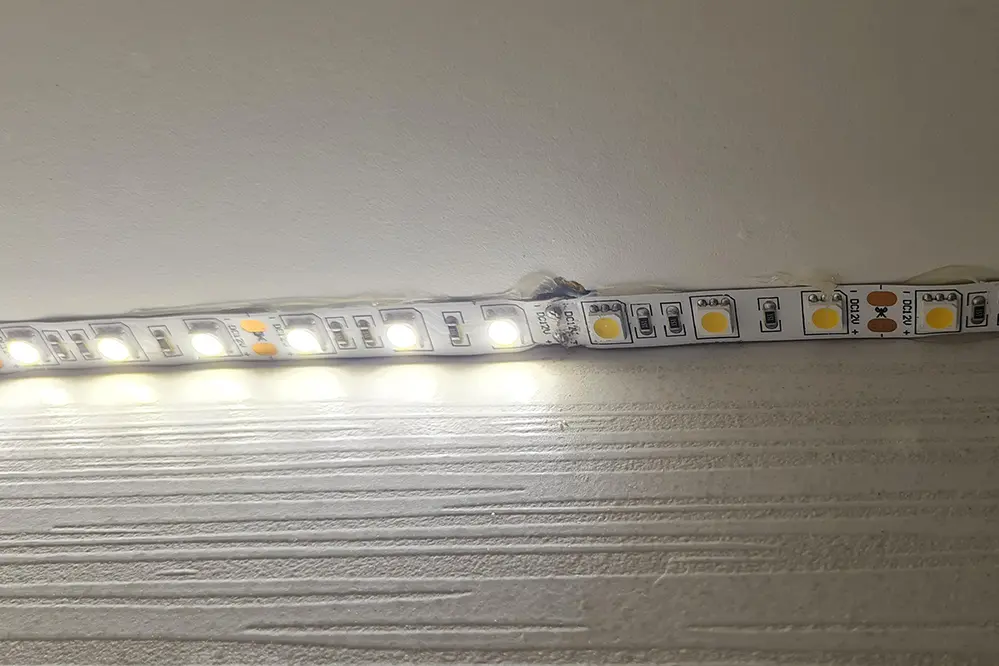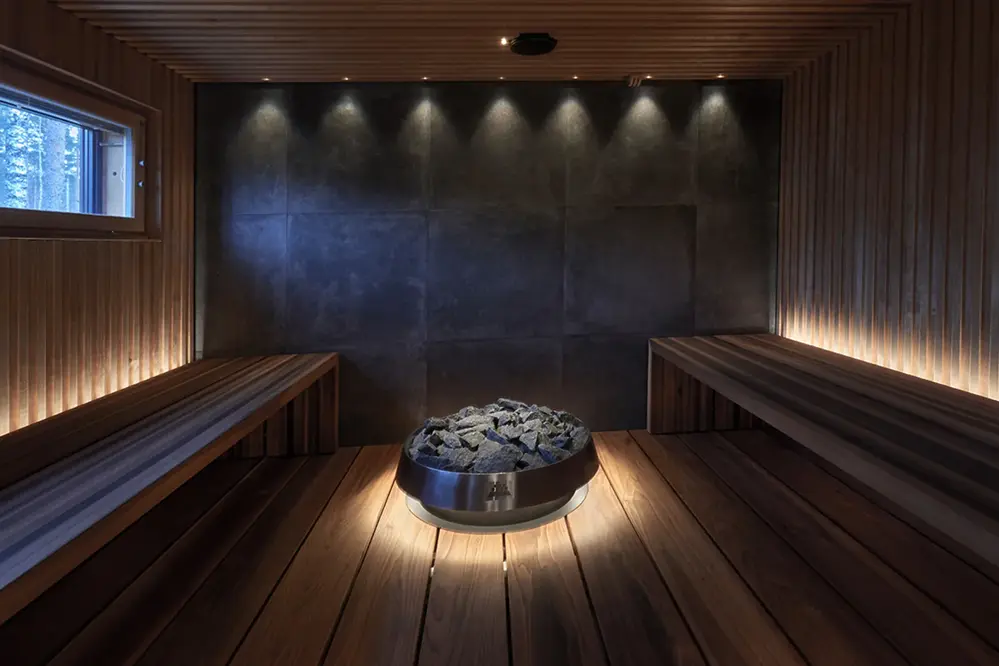In today’s fast-paced world, where technology is constantly evolving, it’s essential to stay informed about the latest advancements that can positively impact our lives. One such innovation that has been making waves in the lighting industry is LED lighting. But did you know that LED lighting goes beyond just illuminating our spaces? It also holds incredible benefits for our overall well-being. In this blog post, we will delve into the fascinating realm of LED lighting and explore the myriad ways it can enhance our health.
When we think of LED lighting, we often associate it with energy efficiency and long-lasting performance. However, its impact on human health is equally remarkable. LED lighting has been found to influence our circadian rhythm, the internal clock that regulates our sleep-wake cycle. By mimicking natural daylight, LED lights can help regulate our sleep patterns, improve mood, and increase productivity. Moreover, LED light therapy has gained recognition for its potential in treating various health conditions, including skin disorders and seasonal affective disorder (SAD).
Allow me to introduce myself – I’m Tom, a seasoned professional in the LED lighting industry with over 15 years of experience. Throughout my journey, I have witnessed the transformative power of LED lighting and its profound impact on human health. Drawing from my extensive knowledge and expertise, I have meticulously crafted this blog post to shed light on the incredible benefits that LED lighting can offer.
Now, let’s dive right in! In the following sections, we will explore three key ways in which LED strip lights can positively influence our health. From their ability to create a soothing ambiance to their potential in promoting relaxation and rejuvenation, you’ll discover the remarkable potential of LED strip lights in enhancing your overall well-being. So, join me on this illuminating journey as we uncover the captivating world of LED lighting and its profound impact on human health.
Remember, the power to illuminate your health is just a click away!
Unveiling LED’s Effect on Sleep
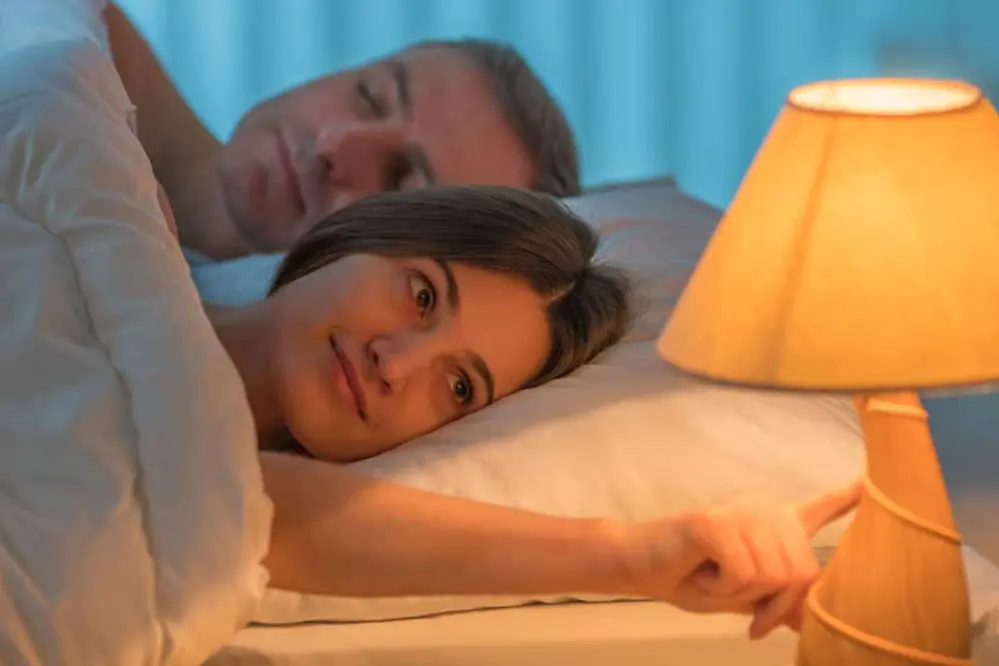
The spectral content of LED lighting emits a substantial quantity of blue light, known for its ability to suppress the secretion of melatonin, a hormone pivotal in regulating sleep-wake cycles. Consequently, excessive exposure to LED lights, especially during evening hours, can impede the natural onset of sleep, altering the quality and duration of rest achieved. It is, therefore, crucial for those seeking optimal sleep health to manage their interaction with LED lighting wisely, employing measures such as dimming lights and using devices with adjustable blue light output in the hours leading to slumber.
Balancing Circadian Rhythms
LED lighting’s spectral qualities can sync or disrupt our circadian clock, influencing sleep and overall health.
LED lights mimic daylight, signaling wakefulness to the body, thereby regulating our natural sleep-wake cycle.
By emitting light frequencies similar to daylight, LEDs can support circadian rhythm regulation, enhancing sleep quality and mood, provided they are used judiciously.
However, exposure to LED light at night can misalign our internal clock, necessitating mindful use—such as adopting warmer tones—to secure proper circadian rhythm and wellness.
Easing Into Sleep with Warmer Tones
The color temperature of LED lights is critical in creating an environment conducive to sleep.
- Utilize red-spectrum LED bulbs in the evening to reduce exposure to blue light, which inhibits melatonin production.
- Set up a lighting schedule that gradually dims and warms the color temperature as bedtime approaches.
- Implement smart lighting controls to automatically adjust the warmth of your LED lights based on the time of day.
Switching to warmer LED tones at night supports the natural sleep cycle.
Using technology wisely can enhance sleep quality by aligning light exposure with our biological needs.
Combatting Seasonal Depression
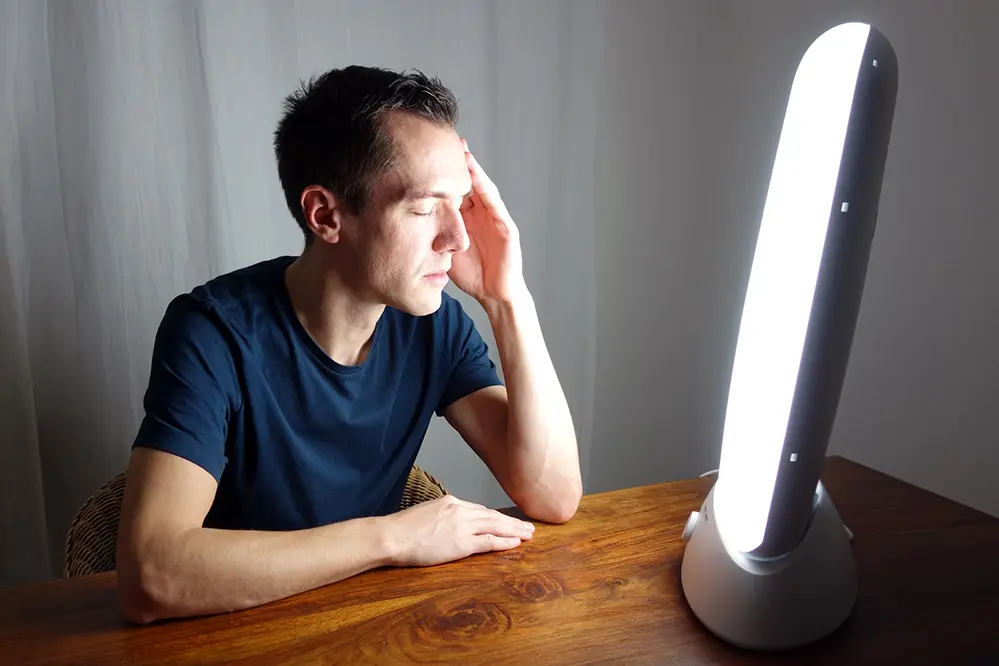
LED lighting has emerged as a therapeutic ally against Seasonal Affective Disorder (SAD), a type of depression associated with the change in seasons. By simulating the broad-spectrum light of the sun, which may be scarce during certain times of the year, LED therapy lamps can mitigate the symptoms of SAD. This light exposure encourages the brain to reduce the production of melatonin, a sleep hormone that can be overly produced during the darker months, while increasing the production of serotonin, a mood-lifting hormone. Consequently, the strategic use of LED lighting can be a beacon of relief for those enduring seasonal depression, elevating mood and restoring a balanced daily rhythm.
Mimicking Natural Light
LED lighting solutions, embracing biophilic design principles, have evolved to closely imitate the dynamic nature of sunlight. Tailoring light attributes to mirror the solar cycle can profoundly influence circadian rhythms, thus affecting overall well-being.
Modern LEDs are designed to replicate sunlight’s color temperature variations throughout the day. This functionality is paramount for recalibrating our biological clocks, which respond to the subtle cues of changing light to regulate sleep and wakefulness.
These advanced lighting systems can automatically transition from cooler, invigorating morning light to warmer, relaxing tones as evening approaches. Implementing such diurnal patterns indoors can be instrumental in aligning our physiological responses with the natural environment.
Beyond influencing circadian rhythms, artificial light that emulates natural daylight can also counteract the effects of limited sunlight exposure, which is especially beneficial during short winter days. The use of LED light to simulate daylight has implications not only for mood and alertness but also for vision and productivity.
Incorporating these illuminating principles into architectural designs and personal environments stands to transform not merely our spaces but also our health, underscoring light’s potential as a vital element of wellness.
Elevating Mood and Energy
LED lighting technology doesn’t just illuminate; it has the profound ability to enhance mood and cognitive performance, acting as a stimulant to the human psyche.
- Regulating Circadian Rhythms: Proper exposure to LED light during the day supports the synchronization of the body’s internal clock.
- Simulated Daylight: LEDs can mimic natural light, uplifting mood and mental acuity, particularly in environments with limited sunlight.
- Enhanced Color Rendering: High Color Rendering Index (CRI) LED lighting can create vivid environments that stimulate alertness and improve mood.
The dynamic spectrum of LED lights can be fine-tuned to increase serotonin levels, thereby promoting happiness and focus.
In strategic applications, LEDs have the capacity to counteract seasonal affective disorder (SAD) and regulate sleep patterns, providing a non-intrusive uplift to human well-being.
Potential Risks of LED Exposure
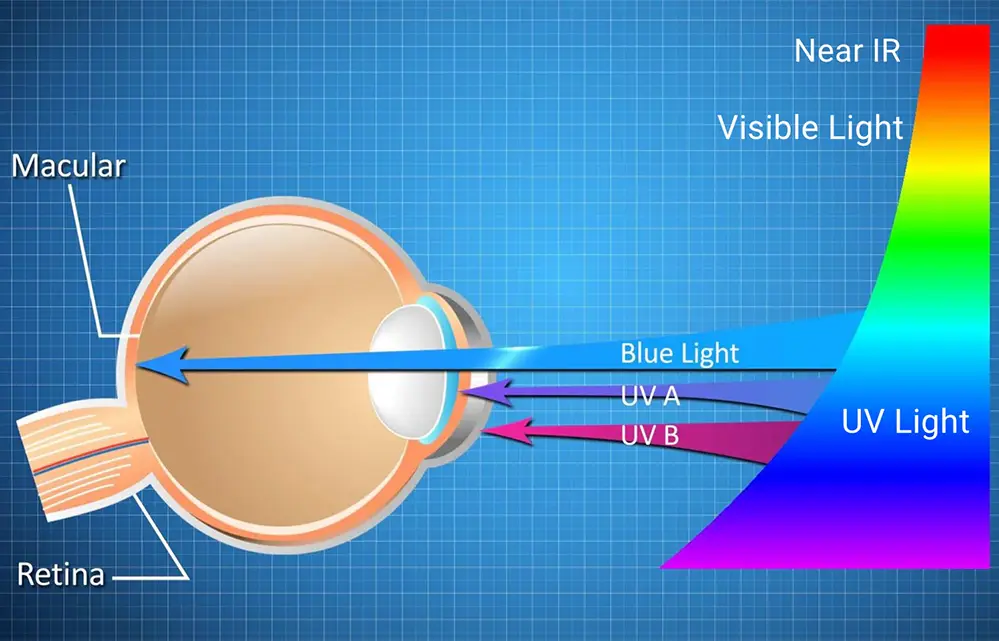
Despite LEDs’ myriad benefits, concerns about overexposure are valid, prompting investigations into potential health implications.
In certain contexts, excessive exposure to high-intensity LEDs can cause discomfort and strain, potentially leading to conditions such as photochemical retinal damage, often linked with blue light hazard.
While not a ubiquitous issue, the term “blue light hazard” and “photochemical damage” warrant cautionary consideration in the realm of LED usage.
Understanding Blue Light Hazards
Blue light, a component of visible light spectrum, has become a point of scrutiny in discussions of LED lighting and ocular health. This high-energy light is known to affect the body’s circadian rhythms and potentially cause eye strain during prolonged exposure. As LED usage becomes more pervasive, understanding the implications of blue light on human health is of paramount importance.
Significantly, overexposure to blue light can disrupt sleep patterns by inhibiting the secretion of melatonin, an essential hormone for regulating sleep-wake cycles. The prevalence of devices and lighting systems that emit blue-rich LED light exacerbates these effects, particularly when used extensively during evening hours. For individuals constantly exposed to screens or LED lighting late into the night, the risk of sleep disorders increases alongside potential for long-term health consequences.
Moreover, there is evidence to suggest that blue light contributes to digital eye strain, also known as computer vision syndrome. Symptoms like dry eyes, irritation, and difficulty focusing can arise from extended screen time without appropriate pauses or protective measures. Awareness of these hazards can guide users towards implementing strategies to mitigate the negative effects of blue light on ocular comfort.
Consequently, it becomes imperative to consider protective interventions, such as blue-light filtering applications or coatings on eyewear, to alleviate potential risks associated with prolonged LED exposure. While not all blue light is deleterious to health—it plays a vital role in daytime alertness and mood regulation—the balance and timing of exposure are crucial. Employing best practices which attenuate excessive blue light intake can help maintain the integrity of our visual systems and overall physiological health, cushioning against the detrimental byproducts of our illuminated environments.
Mitigating Eye Strain and Discomfort
Excessive exposure to LED lighting can lead to digital eye strain, presenting discomfort and potential long-term ocular issues.
- Adjust Brightness Levels: Ensure LED lighting is not overly bright compared to the surrounding environment to minimize glare and strain.
- Utilize Task Lighting: Employ directional task lighting to provide focused illumination, reducing the workload on your eyes.
- Implement Breaks: Adhere to the 20-20-20 rule—every 20 minutes, look at something 20 feet away for at least 20 seconds—to rest your eyes regularly.
Appropriate lighting design is key to preventing discomfort and preserving ocular health.
Layering ambient, task, and accent LED lighting can create a harmonious environment that supports visual ergonomics and overall well-being.
LED Therapy in Skin Treatment
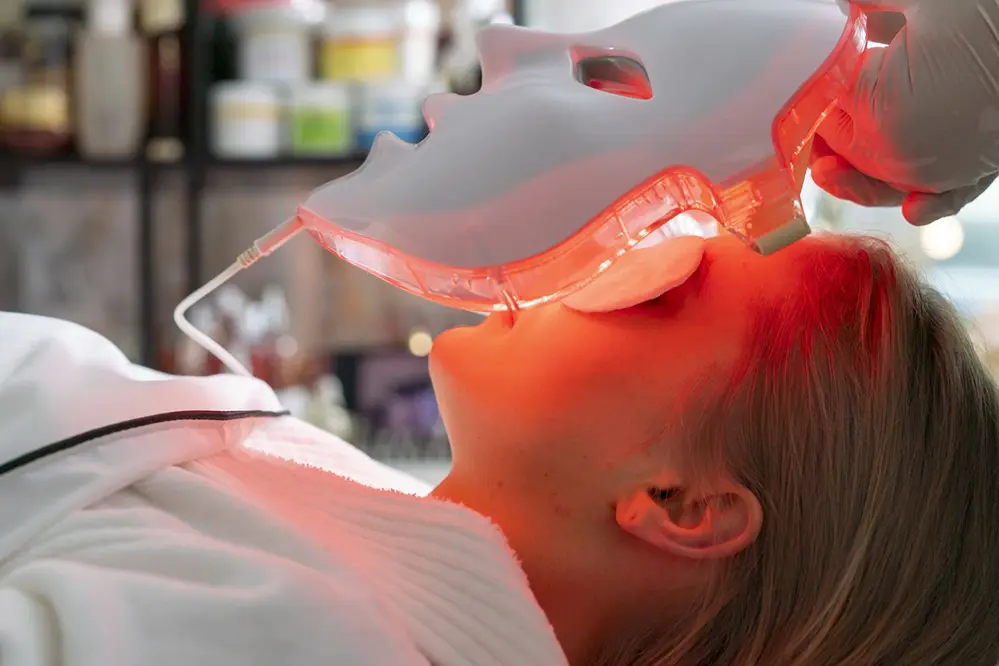
LED therapy employs wavelengths of light to trigger biological processes in the skin cells, fostering regeneration and healing.
In the spectrum of LED therapies, blue light targets acne-causing bacteria, while red light penetrates deeper, stimulating collagen production vital for skin elasticity and repair.
The term “photoaging” describes skin damage from light exposure, which LED treatments can mediate, promoting healthier and more resilient skin.
Accelerating Healing Processes
Wound healing is a complex process, requiring precise cellular interactions influenced by an array of signaling molecules and environmental factors. Notably, LED light therapy has recently been recognized for its potential to accelerate tissue repair and promote faster healing.
In clinical settings, LED light therapy emits specific wavelengths that can stimulate cellular activity, enhancing the body’s natural healing mechanisms. Studies have shown that red and near-infrared light, in particular, can improve blood circulation, reduce inflammation, and stimulate the production of collagen and elastin. These physiological effects contribute to a reduction in wound size and faster healing times, making LED therapy a valuable tool in medical treatment.
Additionally, LEDs offer a unique advantage due to their ability to be integrated into wearable technology. Devices designed with flexible LED strips can be applied directly to the skin, providing localized treatment that can lead to improved patient outcomes. These innovations are paving the way for new forms of at-home therapy, making effective wound care more accessible to the general public.
Furthermore, the non-invasive nature of LED therapy means it can complement existing treatment protocols without significant side effects. By strategically employing LED light therapy during recovery, healthcare professionals can enhance the efficiency of the healing process, which is particularly advantageous in post-operative situations or chronic wound management. Ongoing research is likely to reveal even greater therapeutic potentials of LED lighting, potentially reducing reliance on pharmaceutical interventions and offering a more natural path towards human health and recovery.
Fighting Acne and Aging Signs
LED light therapy exhibits remarkable efficacy in mitigating acne, utilizing blue light wavelengths to target and neutralize P. acnes bacteria, which is a predominant cause of acne inflammation. This antibacterial effect reduces active breakouts and potentially curtails new ones from forming. Concurrently, red and near-infrared light wavelengths stimulate cellular repair and collagen production, addressing aging signs such as wrinkles and fine lines. These wavelengths penetrate deep into the skin, promoting enhanced blood circulation and facilitating the natural rejuvenation of skin cells.
Both blue and red light treatments can be administered with precision thanks to the controllability of LED technology. Integrated into medical-grade devices or at-home treatment kits, LED therapy offers a versatile solution for those seeking an alternative to traditional acne medications that are often accompanied by harsh side effects. Furthermore, these treatments, when performed regularly, support overall skin health, maintaining a more youthful and vibrant complexion.
LED therapy’s utility extends to accelerating the natural healing process inherent in skin repair mechanisms. By encouraging the activation of fibroblasts, cells crucial for tissue repair, LED light aids in the diminishment of scars and enhances the skin’s elasticity. The result is a visible improvement in skin texture and a reduction in the appearance of age-related skin damage.
The implications of these treatments are far-reaching and provide a non-pharmacological pathway to tackling some of dermatology’s most common concerns. The modulated light has been shown to alter skin composition in a beneficial manner, mitigating side effects associated with topical ointments or systemic medications. An encouraging array of studies corroborates the efficacy of LED light therapy for both acne management and the visible amelioration of aging signs.
Moreover, LED therapy stands as a testament to the advancements in non-invasive cosmetic technology. By harnessing specific wavelengths of light, these treatments unlock the skin’s potential for self-repair, orchestrating a series of biological responses that culminate in clearer, more resilient skin. This synergy between science and biology serves as the foundation for a burgeoning field in dermatological treatments, emphasizing the importance of innovative applications of LED technology.
Ultimately, the impact of LED on skin health transcends mere cosmetic improvement. Through consistent application, LED light therapy harnesses the body’s innate healing mechanisms, offering a sustainable, gentle approach to skin health that has the potential to revolutionize the way we approach skin care and aging. It is a clear symbol of how cutting-edge technology and an understanding of human physiology converge to offer solutions previously unattainable by conventional means.
FAQs
How does LED lighting affect sleep?
LED lighting has a significant impact on sleep quality and patterns. The main reason behind this is the blue light emitted by LEDs. Blue light suppresses the production of melatonin, a hormone that regulates sleep-wake cycles. Exposure to blue light in the evening can disrupt the natural sleep cycle, making it harder to fall asleep and achieve deep, restful sleep.
To counteract the negative effects of LED lighting on sleep, it is important to implement proper lighting practices. This can involve using warm-colored LED bulbs with lower blue light emission in the evening and avoiding bright, cool-white LED lights close to bedtime. It’s also beneficial to limit screen time before bed, as electronic devices also emit blue light that can interfere with sleep.
In addition to the impact on melatonin production, LED lighting can affect sleep by disrupting circadian rhythms. Circadian rhythms are our internal biological clocks that regulate various bodily functions, including sleep. Exposure to bright blue-rich LED lighting at night can throw off these rhythms, leading to sleep disturbances and potential long-term health consequences.
It’s vital to prioritize sleep hygiene and create a sleep-friendly environment. This includes using dimmable LED lights or installing lighting controls that allow for adjusting the intensity and color temperature. Creating a calm, soothing atmosphere with the right lighting conditions can help promote relaxation and better sleep.
By understanding the effects of LED lighting on sleep and implementing appropriate strategies, individuals can optimize their sleep quality and enjoy the multitude of benefits that come with a well-rested mind and body. It’s important to be mindful of the impact of LED lighting choices and prioritize sleep as a vital aspect of overall well-being.
What might be the long-term effects of using LED lights in homes?
Long-term effects can be quite positive, as good quality LEDs enhance visual comfort, can positively affect circadian rhythms, and do not emit UV radiation that could potentially damage skin and fabrics.
How does LED lighting compare to traditional lighting in terms of health benefits?
LED lighting offers significant health and energy-saving advantages over traditional incandescent or fluorescent bulbs, as it provides the ability to control color temperatures and light intensity, lacks mercury content, and reduces exposure to flicker, all of which contribute to a healthier indoor environment and reduces the risk of headaches, eye strain, and sleep disturbances.
What does LED do to a human body?
LEDs, or Light Emitting Diodes, have both positive and negative effects on the human body. On the positive side, LEDs can provide various health benefits due to their ability to emit specific wavelengths of light. For example, certain LED lights can be used in light therapy to treat conditions such as seasonal affective disorder (SAD) by simulating natural daylight and improving mood. Additionally, LEDs are energy-efficient and long-lasting, making them an environmentally friendly lighting option.
However, it’s important to be aware of the potential negative effects of LEDs on the human body. Blue light, which is emitted by many LEDs, has been shown to have a disruptive impact on sleep patterns. Exposure to blue light in the evening can suppress the production of melatonin, a hormone that regulates sleep, making it harder to fall asleep and potentially leading to sleep disorders. It is advisable to avoid exposure to bright LED lights, particularly in the hours leading up to bedtime.
In terms of eye health, long-term exposure to intense LED light can cause eye strain and fatigue. This is due to the higher intensity and the potential for flickering of some LED lights. Selecting LED lights that have a high color rendering index (CRI) and are flicker-free can help minimize these negative effects.
To protect yourself from the potential negative effects of LEDs, it is recommended to use LED lights with warm, amber tones in the evening to promote better sleep. Limiting exposure to intense LED lights and taking frequent breaks from staring at screens can also help reduce eye strain.
In conclusion, while LEDs offer many benefits such as energy efficiency and targeted light therapy, it’s important to be mindful of their potential negative effects on sleep and eye health. By understanding these effects and taking appropriate precautions, you can make informed decisions about how to use LED lighting in a way that promotes your overall well-being.
Are LED lights safe for human eyes?
LED lights have become increasingly popular in recent years due to their energy efficiency and long lifespan. One common question that arises is: Are LED lights safe for human eyes?
LED lights emit a type of light called blue light, which has a shorter wavelength and higher energy than other colors of light. High levels of blue light exposure, such as from the sun or electronic devices, can potentially cause eye strain, fatigue, and even damage to the retina.
However, when it comes to LED lights used in indoor lighting applications, the risk to human eyes is minimal. This is because LED lights designed for indoor use have built-in safeguards to reduce the amount of blue light emitted. Additionally, LED lights do not flicker like some traditional light sources, which can also contribute to eye strain.
In recent years, there have been advancements in LED technology that have further improved the safety of these lights. For example, many LED lights now feature “warm white” color temperatures, which have a lower proportion of blue light compared to cooler color temperatures.
Overall, with proper use and adherence to recommended guidelines, LED lights are considered safe for human eyes. It is important to choose LED lights that are designed for indoor use and to follow manufacturers’ instructions for installation and usage.
How do LED lights affect the brain?
LED lights have a significant impact on the brain and overall well-being. When exposed to certain wavelengths emitted by LED lights, the brain’s photoreceptors are stimulated, affecting various physiological and psychological processes.
The blue light emitted by LED lights can have both positive and negative effects on the brain. On one hand, it can enhance alertness and cognitive performance, especially during daytime hours. This can be beneficial for productivity and focus in work or study environments.
However, prolonged exposure to blue light in the evening can disrupt the natural circadian rhythm and suppress the production of melatonin, a hormone that regulates sleep. This can lead to sleep disturbances and have detrimental effects on overall sleep quality and patterns.
In addition to the impact on sleep, excessive exposure to blue light from LED lights has been linked to eye strain, visual discomfort, and even potential long-term damage to the retina. It is important to use appropriate lighting fixtures and limit exposure to blue light, especially during evening hours, to mitigate these effects.
To ensure a healthy balance, it is recommended to incorporate warm white or amber light, which has less of an impact on the circadian rhythm, during nighttime. Using dimmers or color-changing LED lights that can be adjusted according to the time of day can also be beneficial in maintaining a healthy sleep-wake cycle.
In conclusion, while LED lights provide many advantages in terms of energy efficiency and flexibility, it is important to be mindful of their impact on the brain. By understanding the effects of different wavelengths and adjusting lighting accordingly, we can optimize our well-being and overall health.
Can LED lighting improve productivity?
LED lighting has the potential to greatly improve productivity in various settings. With its enhanced lighting quality, LED lighting provides a more comfortable and visually stimulating environment for individuals, which can positively impact their focus and overall performance.
Studies have shown that proper lighting, such as the bright and consistent illumination provided by LED lights, can help reduce eye strain and fatigue. This can result in increased alertness and improved concentration, leading to higher productivity levels in workplaces, schools, and other professional settings.
Additionally, LED lighting offers the advantage of color temperature control, allowing for the creation of specific lighting scenarios that can promote different moods and activities. For example, cooler light temperatures can enhance productivity and focus, while warmer tones can create a more relaxing and calming atmosphere. This flexibility in lighting design enables users to optimize their environment based on their specific needs and tasks.
Moreover, LED lighting technology is highly energy-efficient and long-lasting, reducing the need for frequent bulb replacements and maintenance. This not only saves costs but also ensures consistent lighting quality over time, minimizing disruptions and distractions that can hinder productivity.
In summary, LED lighting can improve productivity by providing a comfortable, visually engaging, and energy-efficient lighting environment. Whether in offices, schools, or other workspaces, the enhanced lighting quality of LED can contribute to increased focus, reduced eye strain, and overall improved performance.
Why do LEDs impact circadian rhythm?
Well, it all comes down to the type of light they emit. LEDs, or Light-Emitting Diodes, produce light that is rich in blue wavelengths. This blue light has a higher energy level and stimulates the receptors in our eyes that regulate our internal body clock.
The circadian rhythm is our biological process that regulates our sleep-wake cycle and other important physiological functions. It is influenced by environmental cues, such as light. When we are exposed to blue light, especially in the evening or at night, it can suppress the production of melatonin, a hormone that helps us fall asleep.
As a result, exposure to LED light, particularly before bedtime, can disrupt our circadian rhythm by tricking our bodies into thinking it’s still daytime. This can lead to difficulty falling asleep, poor sleep quality, and disrupted overall sleep patterns.
To mitigate the impact of LEDs on our circadian rhythm, there are a few strategies we can follow. First, it’s important to limit exposure to LED light in the evening, especially a couple of hours before bedtime. This includes reducing screen time on devices like smartphones and tablets, which emit blue light.
Additionally, opting for warmer-colored LED lights or utilizing lighting fixtures with adjustable color temperatures can help create a more sleep-friendly environment. These alternatives produce light with reduced blue content, which is less likely to interfere with melatonin production and circadian rhythm.
In conclusion, the impact of LEDs on our circadian rhythm is primarily due to the blue light they emit. Being mindful of our exposure to LED light, especially in the evening, and making adjustments to our lighting choices can help maintain a healthy circadian rhythm and promote better sleep.
Can LED lighting impact mood?
LED lighting has the potential to influence our mood. With its ability to emit different colors and intensities, LED lighting can create different atmospheres and evoke specific emotions. For example, cool white LEDs can promote alertness and focus, making them suitable for workspaces. On the other hand, warm white LEDs can create a cozy and relaxed ambiance, making them ideal for residential settings.
The color temperature of LED lighting plays a significant role in affecting mood. Lower color temperatures, such as those simulating the warm glow of candlelight, can induce feelings of comfort and relaxation. Higher color temperatures, resembling natural daylight, can enhance concentration and productivity.
LED lighting also enables dynamic lighting systems that can simulate natural lighting patterns throughout the day, known as Human Centric Lighting. This technology adjusts the color temperature and intensity of the LEDs to mimic the changing colors of natural light, promoting a sense of well-being and regulating the body’s internal clock.
Research has shown that exposure to specific colors can impact our emotions as well. For instance, blue LEDs have been found to have a calming effect, while red LEDs can energize and stimulate. By carefully selecting the color temperature and tint of LED lighting, it is possible to create different moods and enhance our overall well-being.
In conclusion, LED lighting can indeed influence mood. By utilizing different colors, intensities, and color temperatures, LED lighting can create various atmospheres and elicit specific emotions, promoting comfort, relaxation, focus, or stimulation. As our understanding of how light affects us continues to evolve, the experiences and benefits of LED lighting on our mood are likely to expand in the future.
Conclusion
The conversation is far from over.
When pondering the impact of LED lighting, it is important to acknowledge both the illumination benefits and potential health implications. LEDs, with their tunable attributes and efficiency, create environments conducive to both visual acuity and physiological wellbeing. Yet, nuances in their application demand a considered approach to maximize benefits while mitigating concerns.
We are at an exciting juncture in lighting technology.
The proliferation of LED lighting presents us with an unprecedented opportunity – to shape our lit environments in ways that could enhance not only our visual experience but also our biological functions. It is an intersection of technology and well-being that lighting professionals are uniquely positioned to navigate, leveraging human-centric lighting design principles.
In the full sweep of lighting’s evolutionary arc, LEDs represent a significant leap forward.
As the consensus around the benefits of LED lighting continues to solidify, ongoing research is imperative to understand the subtleties of its interaction with human health. Institutions and experts are already responding, with theoretical and empirical explorations growing in scope and depth, particularly after the year 2023 marked a pivot in the industry. Closer collaborations between manufacturers, health experts, and lighting specialists promise thoughtful, health-promoting solutions that capitalize on the potential of this revolutionary technology.
